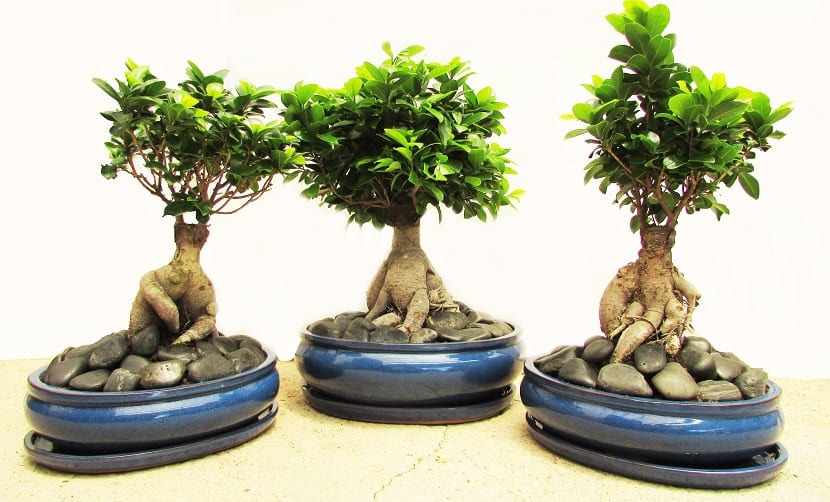
Ficus Ginseng is a plant found within the varieties of bonsai. The discovery of this tree was made in Asian countries, places where its trade began as Ficus Ginseng for its bulbs shape and for its irregularly shaped roots, roots that remain aerialThis means that they are roots that are not completely below the ground.
This is a plant known by the names of Chinese Banyan, Lauro de Indias, Indian Lauro, Malay Banyan, Curtain fig tree or also as Indian ficus, among what is the field of natural development.
Regarding the things you need and all your care We can mention that it is at level number two and it is that the cultivation of this plant is not in a precise way something so simple, so it is best that we have all the information that is necessary so that the plant can have good growth.
Ficus microcarpa ginseng it is a perennial bonsai, which means that this is a plant that always and regardless of the circumstances, its color will stay green, being a tree that has a great development.
Some ficus species They can grow even on rocks that are arid, having the possibility of reaching a development that is lush, as for example, we can mention the case of Amate. The trunk of this plant is thick and with many rootsIf this tree is injured at any time, it produces a gummy-looking substance known as latex.
The bark of the trunk of the bonsai it's from a grayish color and flat in appearance, it has a thick appearance but it is also somewhat thin in the highest part and the crown that it has, as we have already mentioned, is quite leafy.
The leaves grow in an alternate way and is that in nature, the leaves of these trees can measure an approximate of nine centimeters in length, the color of the same is a very bright green, with a somewhat ovoid shape, base and apex with a soft texture.
The term microcarpa means that it is a small fruit tree and we have to say that the fruits of this type of tree are false figs, which are composed of combined flowers that are joined with a structure and whose fruits are ready axillary, being in groups of two. The color that these have is green with shades of yellow and when they are in their maturity stage they turn purple, having an approximate measurement of one centimeter in diameter.
When it is the time of the summer season, these are plants that they have to be watered abundantlyAs with some other plants, when it is colder, less amount of water is what we must water the tree with.

The most recommended thing is that we start with water the part of the cup, so that in this way the leaves are completely covered by water and instead, in the part of the base we have to water less.
We have to take into account that aerial roots They cannot be too wet, as this can cause pests to approach and also in this way prevent them from rotting.
To fertilize the tree, it is recommended that it be one or if we prefer it twice per month, this is from spring to mid-autumn and at the end of the season we give it a good amount of compost so it can have nutrients in the winter.
This is a plant that we cannot prune when we are in winter, but we can remove the branches that are damaged, so in the summer we have to prune it intensely so that we can monitor how the branches and also the size of the leaves.
On the other hand, we should not remove the latex from the wounds in case of having any, since this is a healing of the plant.